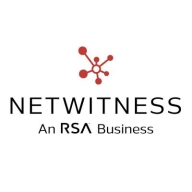

NetWitness NDR and Microsoft Sentinel are competing products in the network detection and response space. Microsoft Sentinel holds an advantage in feature richness, making it worth its price.
Features: NetWitness NDR offers comprehensive threat detection, network traffic analysis, and incident response capabilities. Microsoft Sentinel features cloud-native architecture, AI-driven insights, and seamless integration with Microsoft products.
Room for Improvement: NetWitness NDR could improve its user interface, integration capabilities with third-party applications, and simplify setup processes. Microsoft Sentinel can enhance its non-Microsoft product integration, reduce false positives, and improve KQL query documentation.
Ease of Deployment and Customer Service: Microsoft Sentinel provides cloud-based deployment, simplifying scalability and integration with existing Microsoft services backed by extensive support. NetWitness NDR offers both cloud and on-premise options, requiring more complex initial setups but provides a dedicated support team.
Pricing and ROI: NetWitness NDR presents an upfront setup cost with flexible agreements, cost-effective for network-centric security organizations. Microsoft Sentinel offers a pay-as-you-go pricing model with strong potential ROI due to reduced setup expenses and cost alignment with usage.
```If a customer is already using Microsoft’s ecosystem, the ROI can be positive due to seamless integration.
We attribute our growth to Sentinel.
From a risk perspective, it's about mitigating risk, and as mentioned earlier, we haven't missed many things since we've had the offering in market—only a couple of minor incidents.
Their solutions' integration simplifies resolving issues compared to those caused by third-party products.
Working with a Sentinel engineer helped us tune settings effectively.
When my team needs to escalate issues to Microsoft, especially for Microsoft Sentinel, the response is fast through their French entity.
Office 365 and Exchange are running on it, covering about 35,000 users efficiently.
As our organization uses Microsoft Azure and Defender, everything grows together, and we can integrate various features seamlessly.
Being a SaaS solution, the scalability of Microsoft Sentinel is robust.
So far, we have not experienced any issues, and it has been stable from the beginning.
In the past two years, our team hasn't encountered any issues with the stability of Microsoft Sentinel from an operations perspective.
I need to be aware of deprecated connectors as they may disconnect, but the data continues to be sent with a need for quick adaptation.
We have some tools, such as our off-site Meraki firewalls, that have not fully integrated with Sentinel.
Currently, we are happy to have a way in the middle with not so much cost, but it would be nice to have the ability to enhance the automation of workflows based on learned incidents.
There are complexities in calculating the right pricing tier for different customers, which makes it difficult for me as a consultant during upfront pricing.
Microsoft Sentinel offers more capabilities than Bastion, with a more intuitive experience.
Setting up the right cost model for customers is intricate, requiring careful consideration of various components and licensing tiers.
The ingestion costs for the data analytics is usually the highest cost.
Microsoft Sentinel's ability to correlate data from multiple sources and its detection capabilities are essential.
Microsoft Sentinel has improved cost efficiency, which is one of the key areas we're able to win business against the ability to have threat intelligence.
Microsoft Sentinel's ability to correlate data from multiple sources enhances our threat detection capabilities beyond what is a simple data lake solution by filtering out the noise and consolidating the signal down to a meaningful level that is easier to investigate and see.


Microsoft Sentinel is a scalable, cloud-native, security information event management (SIEM) and security orchestration automated response (SOAR) solution that lets you see and stop threats before they cause harm. Microsoft Sentinel delivers intelligent security analytics and threat intelligence across the enterprise, providing a single solution for alert detection, threat visibility, proactive hunting, and threat response. Eliminate security infrastructure setup and maintenance, and elastically scale to meet your security needs—while reducing IT costs. With Microsoft Sentinel, you can:
- Collect data at cloud scale—across all users, devices, applications, and infrastructure, both on-premises and in multiple clouds
- Detect previously uncovered threats and minimize false positives using analytics and unparalleled threat intelligence from Microsoft
- Investigate threats with AI and hunt suspicious activities at scale, tapping into decades of cybersecurity work at Microsoft
- Respond to incidents rapidly with built-in orchestration and automation of common tasks
To learn more about our solution, ask questions, and share feedback, join our Microsoft Security, Compliance and Identity Community.
Using a centralized combination of network and endpoint analysis, behavioral analysis, data science techniques and threat intelligence, NetWitness NDR helps analysts detect and resolve known and unknown attacks while automating and orchestrating the incident response lifecycle. With these capabilities on one platform, security teams can collapse disparate tools and data into a powerful, blazingly fast user interface.
We monitor all Security Orchestration Automation and Response (SOAR) reviews to prevent fraudulent reviews and keep review quality high. We do not post reviews by company employees or direct competitors. We validate each review for authenticity via cross-reference with LinkedIn, and personal follow-up with the reviewer when necessary.